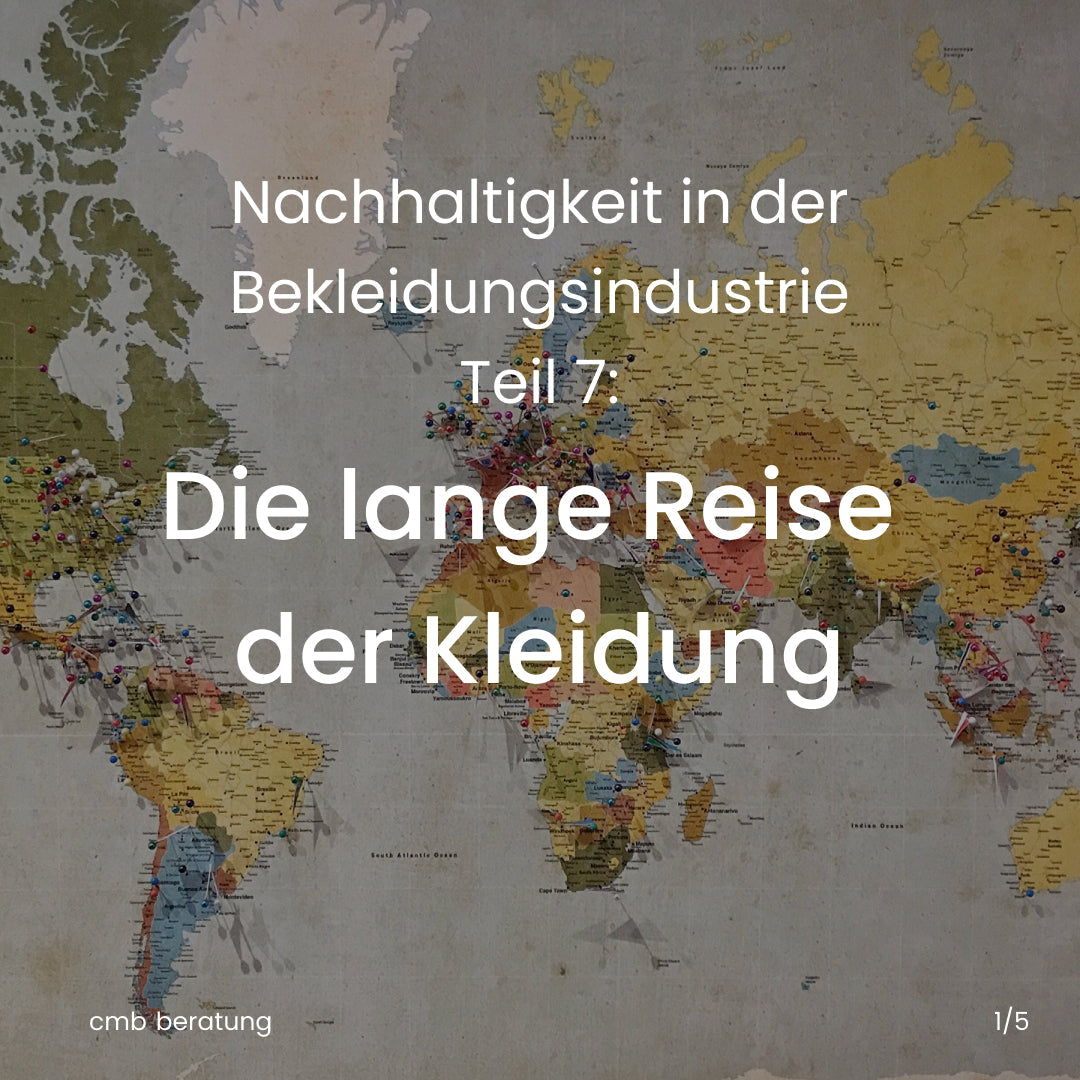Before a piece of clothing hangs in a store or arrives at a mail-order company, it has often seen more than many people do in a lifetime. The journey begins long before it's first worn – and it takes you across the globe.
20,000 kilometers for one piece of clothing
A T-shirt consists of several production steps, spread across different countries and continents. Raw materials, spinning, weaving, dyeing, sewing, and printing – each of these steps usually takes place in a different location. This easily adds up to over 20,000 kilometers.
An example: The cotton T-shirt
The journey begins with cultivation. Cotton, for example, grows in China. It then travels to India, where it is spun into yarn. The yarn is then often processed into fabric in Bangladesh – through knitting, dyeing, and sewing.
From there, the finished T-shirt travels to Europe or the USA, where it may be printed or labeled. Only then does it go on sale. Some companies now also have their T-shirts manufactured in Africa, for example, in Ethiopia, Kenya, or Togo.
The price of the trip
The logistical complexity is enormous – and this for a product that often sells for less than five euros. This simply cannot work. Others foot the bill: the environment and people along the supply chain. Because every stage leaves traces – through CO₂, the use of chemicals, and poor working conditions.
In addition, many companies lack a complete overview of their own supply chain. Information about origin, production conditions, or upstream suppliers is either missing or non-transparent.
Sharing responsibility
Something needs to change here. Companies need to know where and how production takes place – and take responsibility. But consumers also play a role: Those who buy cheaply support a system based on exploitation.
Because no matter how cheap a T-shirt may be in the store, someone always pays the price.



